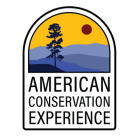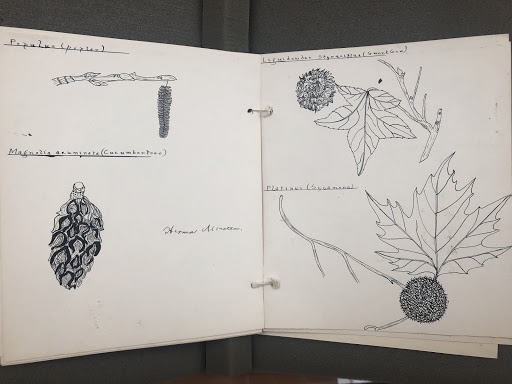A Memoir of Women Who Inspire Me
By: Sonya Carrizales
While studying pioneering women in Yellowstone during the past two weeks of my internship, I’ve been reflecting on how the experiences of the women I’m researching compare to the stories of women in my own family who I look up to:
Thinking of Ida Carlson Eagle or “Mom Eagle” reminds me of my great grandmother, Grace. When Ida was nine years old, her mother was killed in a horse carriage accident, and Ida’s dad sent her to live with relatives who expected her to take care of their children in exchange for room and board. By nineteen, Ida supported herself as a waitress in Wisconsin when she came across an ad for waitress positions at the Fountain Hotel in Yellowstone National Park. Ida got accepted for the position, packed up her things, and moved to the Fountain Hotel without hesitation. Working at the Fountain Hotel, Ida met Sam Eagle, a Fountain Hotel staff fisherman by day and bartender by night who would become the love of her life. Sam and Ida Eagle got married on September 17, 1907 and proceeded to raise ten children while managing a store together in the isolated West Yellowstone. In Women in Wonderland: Lives, Legends and Legacies of Yellowstone National Park by Elizabeth A. Watry, Ida is described as a patient, steadfast woman who worked incredibly hard to raise her ten children, manage the daily operations and continual expansion of the Eagle’s Store, and embody her “Mom Eagle” nickname by protecting, guiding, caring, and feeding not only her ten children, but also all the seasonal employees who worked in her store.

Portrait Ida Eagle captured in the 1940s. Photo taken from page 85 of Women in Wonderland: Lives, Legends and Legacies of Yellowstone National Park. Photo courtesy of Eagle family.
In comparison, my great grandmother Grace was a migrant farm laborer when she was a little girl. Born in Texas, my grandma Grace also lost her mother at a young age, only went to school through the third grade, and spent the remainder of her childhood picking cotton in the fields all over the South United States. At seventeen, my grandma Grace got married to my great grandfather and they moved to the small town of Burlington, Wyoming. While my great grandpa was working strenuously in the field most days, my grandma Grace was busy raising my grandpa Robert and his five other siblings. From early dawn until dusk, my grandma Grace spent fifty years of her life supporting our family through cooking every single meal on the table, making mounds of fresh tortillas on the griddle, cleaning the house meticulously, and working in the fields in her spare time without complaint. Although my great grandpa passed away suddenly in the 1990s due to a heart attack, my grandma Grace outlived him almost thirty years, acting as the glue holding our family together by caring, cooking, and cleaning for her five children, fifty-one grandchildren, and growing number of great grandchildren. My grandma Grace, who passed away in March 2019 after battling dementia for 10 years and outliving three rounds of nursing home patients, embodied compassion through her caring demeanor and selfless attitude. Similar to Ida Eagle, my great grandmother devoted her life to serving others and I feel her legacy lives on through the lessons she has taught my family and I.
Thinking of Herma Albertson Baggley reminds me of my grandma Carole. Both self-starting women who had to persevere to become successful in their fields, Herma Albertson Baggley majored in Botany and minored in Philosophy when she graduated from the University of Idaho and received double honors for her academic achievements. According to Herma Albertson Baggley’s Autobiographical Statement within the Herma Albertson Baggley Manuscript collection in the Heritage and Research Center archives, she and one other woman were the first people at the University of Idaho able to achieve such high scholastic recognition. Baggley was offered a position in the summer of 1926 as a seasonal maid or “pillow puncher” at Old Faithful Lodge in the mornings, and a volunteer naturalist in the afternoons. Although Baggley got paid a meager $15 per month for her work, she thoroughly enjoyed constructing and interpreting the Nature Trail at Old Faithful through designing self-guided signs. Herma went on to become the first permanent woman ranger-naturalist hired by Yellowstone National Park under the civil service program in 1931.

A sample of Botanical Drawings drawn by Herma Albertson Baggley. These drawings can be found in the Herma Albertson Baggley Papers, a manuscript collection within the Heritage and Research Center’s archives. Photo Courtesy of National Park Service.
After working her way up from a pillow-puncher to a seasonal guide and then a ranger-naturalist, Baggley was hired as a junior ranger naturalist despite being qualified to be an assistant ranger naturalist due to the sexist policies in place at the time. While working as a ranger-naturalist, Baggley continued to interpret the natural features of Yellowstone in the summers while contributing many articles to Yellowstone Nature Notes in the winters. After resigning from her position, Herma Albertson Baggley co-authored two editions of Plants of Yellowstone National Park, which was one of her ultimate goals as a botanist.

Herma Albertson Baggley guiding visitors along the Nature Trail, Summer 1926. Photo Courtesy of National Park Service.
My grandmother is the youngest of her five siblings and the epitome of resilience. She was raised in Emblem, Wyoming, working on her family farm in a small house with no running water. Growing up in poverty, she couldn’t afford to visit a doctor after catching strep throat which resulted in her developing rheumatic fever as a child. After being hospitalized for nearly a year, she stared down the face of death as she fought for her survival. After recovering from rheumatic fever, my grandma attended high school, married my grandpa Robert at eighteen, and had my mom shortly after. However, my grandpa passed away in a motorcycle accident a few months after my mom was born, so by nineteen my grandma was widowed, taking care of my mother on her own, and studying engineering at the University of Wyoming. She was one of only 3 women in her graduating class who majored in engineering, and she went on to get a full ride scholarship from Colorado School of Mines to get her Master’s degree in Petroleum Engineering and Industrial/ Organizational Psychology. Now at 66, my grandma has worked in Denver as a Senior Petroleum Engineer for decades, and she lives in a comfy condo alongside the Foothills. A trailblazer at heart, my grandma rose from the ground up like Herma Albertson Baggley, and had the gumption to become a successful female petroleum engineer in the 1980s. She has taught me so many lessons that have stuck with me, the most important one being to always fight for my highest hopes and ambitions.

